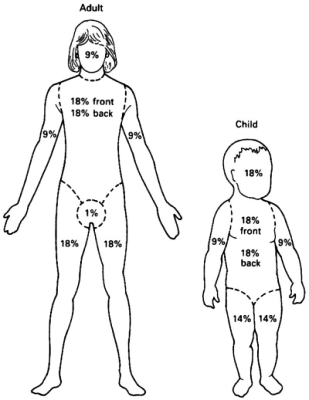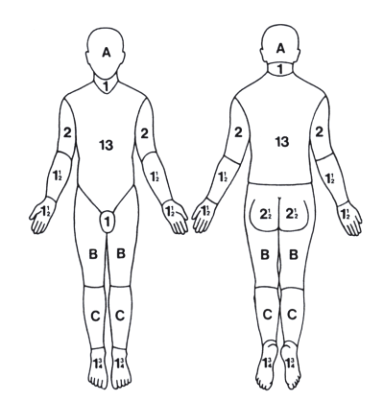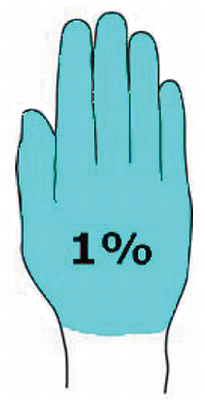
Child: For every year of age >1yr up to 10yr, decrease head surface area by 1% and increase each leg by 0.5%

| Age | 0yr | 1yr | 5yr | 10yr | 15yr | Adult |
| A | 9.5 | 8.5 | 6.5 | 5.5 | 4.5 | 3.5 |
| B | 2.75 | 3.25 | 4 | 4.5 | 4.5 | 4.75 |
| C | 2.5 | 2.5 | 2.75 | 3 | 3.25 | 3.5 |

Palm and fingers of the patient's hand = 1% TBSA